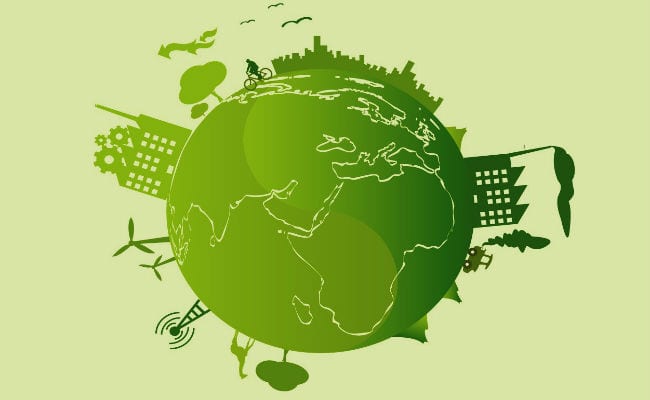By sustainable we can understand something that its development is self-sustaining, which means that it does not require external sources to support its development, since the system is composed of elements, whose internal processes support each other, which allows its permanence in timeo.
It is likely that we currently hear about sustainable consumption, and this is because, in the current era, awareness of the consequences of human development has led us to choose policies and planned actions that allow the execution of activities inherent to the daily life of the human being, without this having an impact on the environmental balance. In a practical sense, we could establish that this concept defines the planning of activities without altering the natural processes of the environment.
Sustainable consumption to promote environmental balance

The environment is defined as the set of vegetation-fauna-atmosphere relationships that surround us. Since man began to walk the earth, he became a modifying agent, since that desire to "go further", that impulse to evolve, led him to work to generate day by day better conditions that would facilitate the development of their daily life.
The human being has always interacted to a greater or lesser degree with the environment since from there it was able to obtain all the resources to survive and to evolve in its development. They were factors that had an impact on the alteration of the environmental balance: the growth of the world population to excessive levels, increasing the demand for food and other resources, which resulted in the human being will generate severe damage to their environment, some irreversible. , such as the depletion of non-renewable resources, the pollution of water courses or the air, the generation of gases of the renowned greenhouse effect.
And the man worked for his benefit, but did not consider the impact on his environment.
- To build houses, we destroy entire forests, leaving thousands of species homeless.
- To keep us warm, we take the skins of animals; to feed ourselves, we eat their meat.
- To build cities: we slash, burn and destroy.
- To mass create products for our consumption, we industrialize, without worrying about the consequences of emissions.
This way of acting, allowed the evolution of the human speciesHowever, this form of action was not sustainable, because our indiscriminate action led us to a dead end, because, when we wanted to give continuity to our usual processes, we realized that the conditions that had been generated did not allow that we continue walking along the path that we had been traveling.
Sustainable consumption concept
When did the concept of sustainable consumption emerge?
When the effects of pollution became undeniable, a current arises that begins to take action, and to promote a new work methodology, which invites a paradigm shift, to consciously undertake actions, analyzing the repercussions, and always making options. that represent the least possible impact, and that of course allow the renewal of the products.
In 1992, in the framework of a United Nations conference on environment and development, the concept of sustainable consumption was taken for granted, accepting its importance the construction of a new thought extended to the new generations, marked by the establishment of kinder relationships with the environment. In 1998, this organization began a sustainable development program, which consisted of planning that contemplated certain economic activities and their repercussions. In 2003, the working groups were launched to develop a methodology known as the Marrakech process.
Sustainable consumption is based on certain premises such as:
- The human being is a modifying agent of his environment, but contrary to what was believed, the environment also influences him. So kind actions awaken a beneficial response; abuses, for their part, carry harsh consequences.
- The action that involves the environment must be carried out through planning, based on the capacity for renewal. It is about always thinking based on a balance.
- Choose, whenever possible, products that are quickly renewed.
Consequences of pollution
Already at this point, we can assert that sustainable consumption was developed from the evidence of the damage caused by pollution, which not only affected other species, but also had direct action on the well-being of the human being. The main causes that led to the spread of conscious consumption are listed below:
- As an example of the boomerang effect generated by our harmful actions, there is the fact that one in four deaths in human beings is produced as a consequence of environmental degradation.
- A wide variety of health problems are a direct consequence of environmental problems. Especially those that involve the air, directly associated with the development of serious respiratory diseases in the population. According to the figures managed by the United Nations (UN), the manipulation of lead contained in paints, with which children's toys were painted, is the main cause of brain damage to a population of approximately 600,000 children per year; It has also been determined that the seas contain areas where the marine ecosystem has perished, known as "dead zones", which maintain low oxygen levels, which conditions the development of marine life. Sewage has contaminated large bodies of water, causing death and disease.
- Many ecosystems have been destroyed by the destructive action of man. Many species, animals and plants, have become extinct through unconsciousness.
Actions derived from sustainable consumption
The development of this concept has invited the human being to develop a new methodology of action and environmental interaction, based on the following steps:
- Planning: It is a call to all actions to carry out an organized development of all its economic activities in order to avoid the undesirable consequences of lack of control.
- Organized population increase: Extrapolate, considering birth rates, to get an idea of how the population will increase in subsequent years. This factor is essential for effective planning. In the same way, the government of a nation has the duty to establish birth control plans, in order to avoid excessive growth.
- Use of currents in industries: Previously, in industrial processes, the development of a product was an object of interest, rejecting the by-products and waste lines generated. Nowadays, the sustainable design of chemical plants is invited, where the positioning and / or processing of by-products is planned, as well as the treatment of waste streams (such as wastewater) before being released to bodies of water. The installation of filters in chimneys is another action with a view to controlling emissions to the environment.
- Awareness: In order to spread these actions, a global campaign has been started, which seeks to involve everyone in this new form of action. This has the purpose of guaranteeing the success and effectiveness of sustainable consumption plans.
Marrakech process

Presented at the world summit on sustainable development, held in Johannesburg, a project was presented based on an action plan extensible to the nations of the world, which seeks to carry out an efficient fight that helps to reverse the damages of the actions developed indiscriminately .
Sustainable Consumption and Production (CPS) that is his work motto. The development of the Marrakech group is one answer. To the need to exercise forceful actions that are disseminated in all nations, and that are managed in the sustainability guidelines.
Stages of the process:
- Regional inquiries: This stage includes the identification of the main problems that they cause at the national level, it is about the identification of the main needs. In this, the authorities of each nation play a decisive role, as they are those who know in depth the particularities of the nation, and therefore, can promote the development of a plan adjusted to the particularities of each one of them.
- Preparation of regional strategies and implementation mechanisms: It is defined as the responsibility of the authorities, the approach of problems to the institutions that make up the national organization, in order for them to work on providing answers, and on the development of plans.
- Implementation of specific projects and programs at all levels: At this stage, the importance of putting the plans into practice and developing effective tools to solve a specific problem is raised.
- International meetings: For the purpose of monitor progress, promote information exchange and mutual cooperation mechanisms between nations. This part seeks the integration of individual efforts to achieve a higher end.